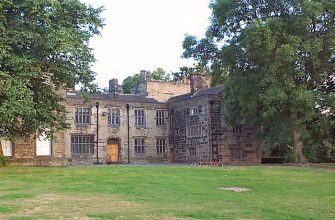Stretching over 95 miles of stunning coastline from East Devon to Dorset, the Jurassic Coast in England is a truly remarkable destination. This UNESCO World Heritage Site is a geologist’s dream, offering a unique glimpse into Earth’s history spanning 185 million years across the Triassic, Jurassic, and Cretaceous periods. With its dramatic cliffs, beautiful beaches, and rich trove of fossils, the Jurassic Coast is a must-visit for nature lovers, history enthusiasts, and tourists alike.
History and Geology
The Jurassic Coast is a geological wonder, showcasing 185 million years of Earth’s history. The cliffs along the coast serve as a natural timeline, revealing layers of sediment laid down over millions of years. Each layer corresponds to a different geological period, with the oldest rocks from the Triassic period at the western end of the coast and the youngest from the Cretaceous period at the eastern end. The coast is renowned for its fossil-rich cliffs, which have yielded numerous significant discoveries, including the first complete Ichthyosaur skeleton.
Attractions and What to See
The Jurassic Coast is home to a wealth of natural and historical attractions. Here are some highlights:
- Durdle Door: This iconic limestone arch is one of the most photographed landmarks on the coast.
- Lulworth Cove: A beautiful horseshoe-shaped cove formed over millions of years by the power of the sea.
- Charmouth Beach: Known for its abundance of fossils, this beach is a popular spot for fossil hunting.
- Golden Cap: The highest point on the south coast of England, offering breathtaking views of the coastline.
- The Fossil Forest: A unique geological feature where the remains of an ancient forest have been fossilized.
Tours and Admission
While the Jurassic Coast is free to explore, guided tours offer a more in-depth experience. Several companies offer fossil hunting tours, guided walks, and boat trips along the coast. Some attractions, such as the Charmouth Heritage Coast Centre, offer free admission but may charge for specific activities or events.
Tips for Tourists
Visiting the Jurassic Coast is an adventure, but there are a few things to keep in mind:
- Wear sturdy shoes, especially if you plan to do a lot of walking or hiking.
- Always check the tide times before you go fossil hunting. The best time to find fossils is after a storm or at low tide.
- Respect the environment. Don’t climb on the cliffs or remove large rocks.
- Be aware that some areas of the coast can be dangerous due to landslides and unstable cliffs. Always follow safety signs and stay on marked paths.
Practical Information
The Jurassic Coast is easily accessible by car, with several car parks along the coast. Public transport options include trains and buses, with stations and stops in many of the coastal towns. Accommodation options range from campsites and holiday parks to hotels and B&Bs. There are also plenty of restaurants, cafes, and shops in the towns along the coast.
In conclusion, the Jurassic Coast in Dorset, England, is a destination that offers a unique blend of stunning natural beauty, fascinating geology, and rich history. Whether you’re a fossil hunter, a nature lover, or simply a tourist looking for a memorable experience, the Jurassic Coast has something for everyone.








